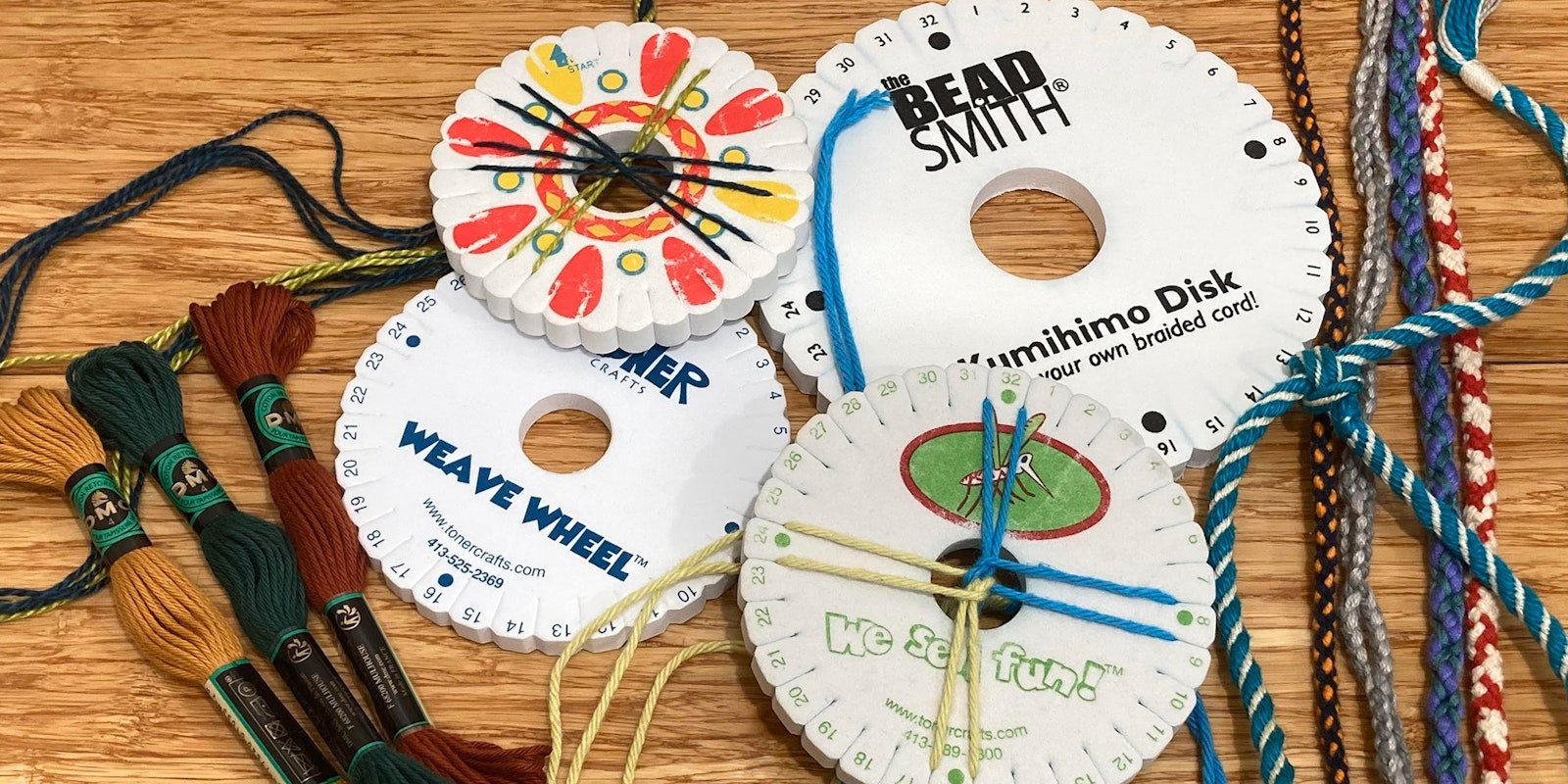This year’s Twelve Months of On-the-Go Projects, created by members of our PieceWork team, is our way of thanking our All Access subscribers for being such valued members of our community. Each of the upcoming monthly patterns was designed to be quick, fun, and portable. The projects will encompass a variety of crafts, so that you can sample an array of different techniques year-round.
The Japanese name for the craft of braiding—Kumihimo—means “a gathering of threads.” These fancy braids have myriad uses. I have braids functioning as key holder, sunglass cord, basket handle, wrist strap on a hiking stick, jewelry, and components of artwork, to name just a few. Colorful braids make great accents to enhance your other handmade items—think purse handles, drawstrings, frog closures, and decorative trim. Kumihimo involves exchanging threads, usually 8 or more, in a sequence of movements that can range from very simple to very complex. The sequence of movements determines the shape of the finished cord, which can be round, square, flat, or other shapes. Color placement works with the movements to create patterns.
I often use a marudai (braiding stand) and tama (weighted bobbins). It takes a little effort to prepare the bobbins and some time to learn the sequence of movements, but once it’s going, it’s a wonderful, meditative craft. Fortunately, you can get started without the fancy equipment—all you need is some yarn and a braiding disk for a very portable project!
A foam braiding disk has notches around the perimeter to hold the individual threads and a hole in the center to accommodate the developing braid. You can find kumihimo disks at bead suppliers or craft stores, where they are often among kids’ craft supplies as friendship bracelet makers. I have both kinds; the kid craft versions are smaller and are made of softer foam, but otherwise, they are the same tool. I usually grab one of the kid-sized disks, since I find the softer foam easier to use. Here’s a key fob to make as a first project. The braid is a simple sequence of moves that creates a smooth spiral.

